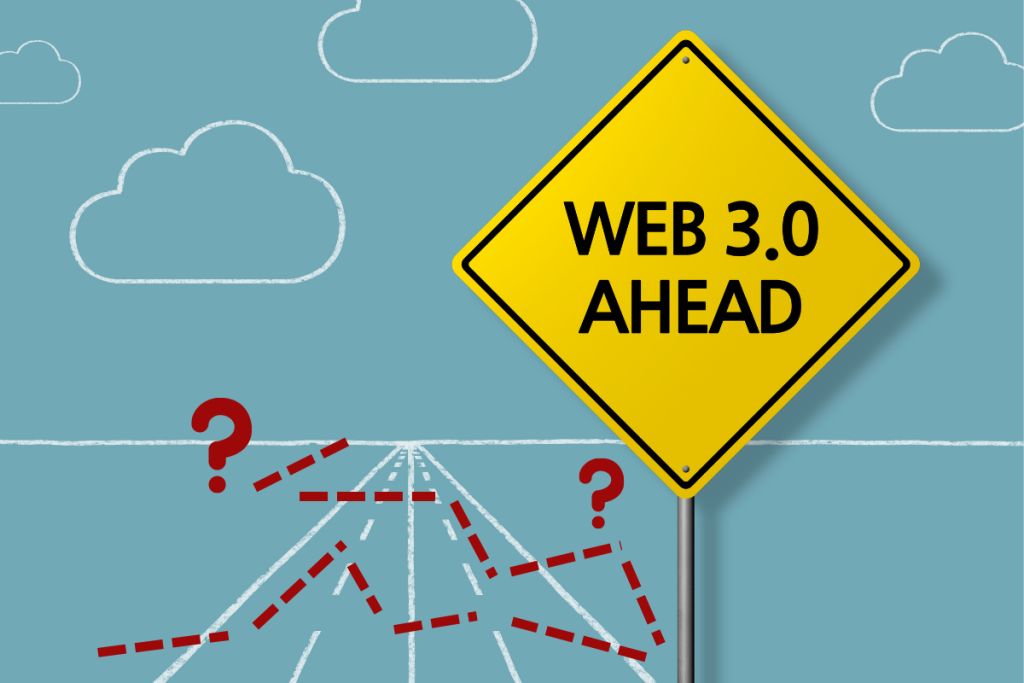Innovation is often declared impractical …even impossible. What happened to DEC (Digital Equipment Corporation) pre personal computers being adopted on mass scale? It’s founder, Ken Olsen, declared at World Future Society convention, ‘There is no reason anyone would want a computer in their home.’ Well, needless to say, he was wrong. The article goes into the hot innovation of today – Web3 – and will it make it to ‘mass adaption’ on day.
He was wrong. By the end of 2012, more than 80% of households in the US had a computer, and DEC lost out on the opportunity to champion the personal computer revolution. IBM PC architecture became dominant while the DEC would all but fade into oblivion. (Thanks for being at the “World’s future” conference).
Ten years later, we are staring at the possible emergence of a technology that will shape the world and the internet as we know it.
Will Web3 join the list of initially controversial technologies that ultimately became accepted by mainstream users?
…or will the dreams of a fully decentralized internet future remain in dreamland?
From Innovation to Acceptance.
Web3 is accelerating. From just a few wins here and there, this new internet space is becoming more significant by the day with the launch of many Web3-focused projects. However, the $27 billion question in the minds of many investors, CEOs, founders, developers, and everyone looking to tap into the potentials offered by Web3 remains:
“Will Web3 go beyond technical terms, steep learning curves, and the ‘tech-savvy’ appeal to becoming a technology that can easily be interacted with by the average user?”
A total of 7.8 billion people use Facebook, Google search, and thousands of Web2 apps today regardless of vast differences in social status, nationality, race, education, and technological exposure. We can only boast of a mass-adopted decentralized internet when users across all walks of life can access the Web3 internet with little or no entry barrier. Innovation is not enough for a solution to reach mass adoption; it must also be intuitive, easy to use, and cost-effective.
Let’s take a few steps backward to appreciate the present state of Web3 growth.
Where are we coming from?
When Gavin Wood coined the term Web3 in 2014, he envisioned a ‘decentralized online ecosystem based on blockchain”. A free web where decisions and control are democratized while incorporating the semantic ideals of Tim Berner Lee. Instead of relying heavily on a few autocratic giants to power the web, we’ll have a decentralized network where users own their data. Web3 is the return of property rights to the users plus a personalized experience made possible by artificial intelligence, virtual reality, and augmented reality.

Where we are.
This idea has found solid, innovative roots less than a decade later. From whole Web3-focused projects to infrastructure, service providers, educational resources, and the launch of Web3 smartphones, we have gone from the idealization stage to building a decentralized internet. More people are interested in Web3 and its potential. At the same time, while there might still be a few uncertainties surrounding the ‘how,’ the ‘what’ is gradually becoming more evident. However, compared to Web2 and its vast influence, we seem to have only scratched the surface regarding mass adoption.
What are the limitations stopping Web3 from becoming a technology that can be interfaced with by the general populace?
Simple is the new complex.
One of the most commonly identified challenges to the mass adoption of Web3 is the steep learning curve. While Web3 inherently offers a lot of potentials, it’s such a technical field with complicated terms and even more complex explanations that getting your head wrapped in it might take some time.
The average person is already accustomed to the click, swipe, and comment nature of Web2 (It doesn’t help that the attention span for humans at 8.25 seconds is a little less than that of a goldfish).
Technical jargon may be alright to nerds and geeks, but for Web3 to attain mass adoption, more effort will have to go into breaking down the concepts for mainstream users. Luckily educational resources and websites have been popping up all across the internet, providing Web3 knowledge at little or no cost.

Interaction with DApps and smart contracts still presents a problem to the mainstream. Perhaps we are focused too much on the sophistication of our technologies to consider how end users use them. User experience presents a solid challenge for the mass adoption of web3.
Beyond functional innovations, the average user also wants intuitive solutions that can be used and navigated without having to consult the documentation page severally. Existing web browsers that mainstream users are familiar with do not currently support Web3. You need to go through adds-on and extensions, all of which may prove to be too much for the average user.
Do all of these mean the future looks bleak for the mass adoption of Web3?
Of course not.
Building for the people.
For Web3 to reach the mainstream, Web3 projects must be built for people, not just for the tech-savvy. Chains like Solana and Polygon, alongside companies like HTC, are trying to bridge the hardware gap by introducing Web3 smartphones. Moralis provides educational resources and learning material to acquaint the public with Web3.
Flux is redefining user experience by creating infrastructure for intuitive DApps and deploying technologies that give developers, and business owners access to computing resources without the complexities. Zelcore is already running without the need for complex mnemonics and catchphrases. Every day, FluxLabs innovators are working towards creating an internet that is truly by and for the people.

But will all of these be enough to reach the tipping point of mass adoption?
In the words of Theodore Hook, “The best way to predict the future is to invent it.” At Flux, that’s what we do. We are building the future of the Web3 internet. Join us: www.runonflux.io.
About FluxHighway
FluxHighway is dedicated providing you the latest news about Flux (FLUX), and other decentralized Web3 projects in the crypto industry. Our goal at FluxHighway is to provide you with the best and most exclusive information about the crypto industry.
Follow us:
Facebook I Facebook Groups I Instagram I Linkedin I Twitter
Although the material contained in this website was prepared based on information from public and private sources that Fluxhighway.com believes to be reliable, no representation, warranty or undertaking, stated or implied, is given as to the accuracy of the information contained herein, and Fluxhighway.com expressly disclaims any liability for the accuracy and completeness of the information contained in this website.
Via this site.

